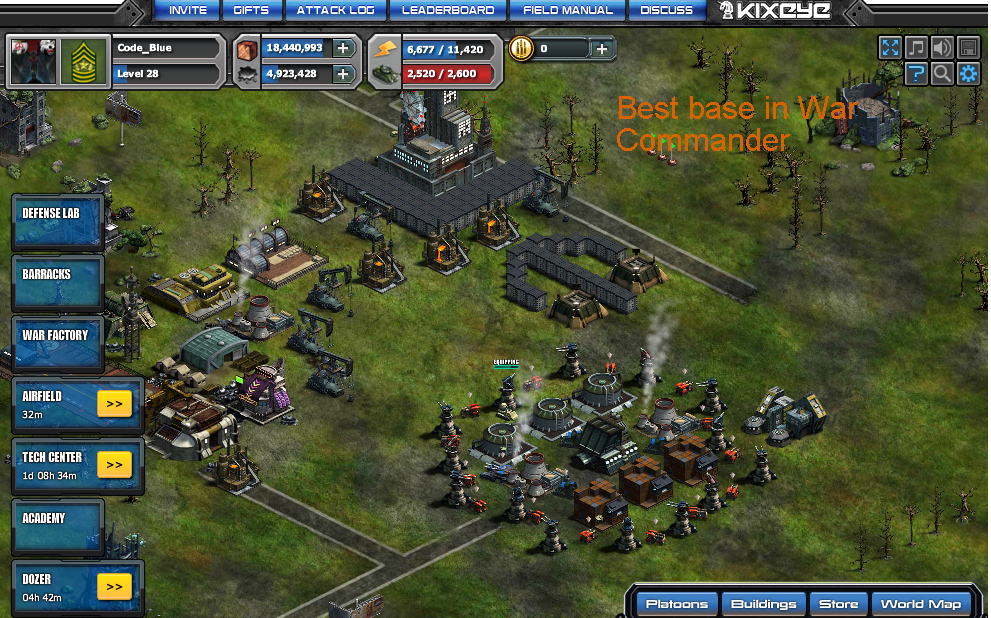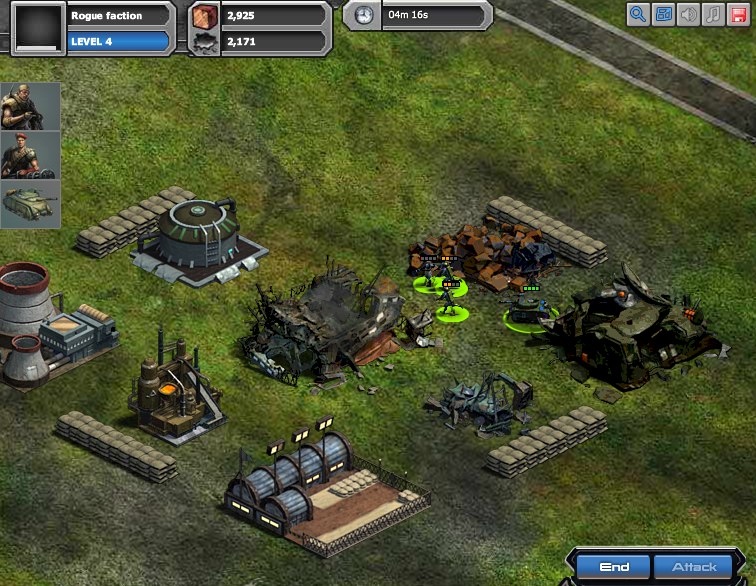

The gameplay may still be great, but what it’s being used for in this instance is dull, and nowhere nearly as inspired and entertaining as the story missions. Beyond that, there’s a certain degree of tedium that sets in with attacking bases, as players often have pretty uniform layouts. This has happened on numerous occasions, on top of a few login issues. I’ve found myself queueing for an attack for several minutes before the game outright stops working. Yet, in my experience, War Commander’s netcode isn’t solid enough to support this ongoing metagame. The core gameplay is still there, yes, and the idea of taking down another player’s hard work is a winning one. The multiplayer, where players will be spending most of their time, is more of a mixed bag. It helps that the game looks crisp and clean, with every art asset clearly defined and easy to tap on at a moment’s notice. Using my Pixel C’s touch screen to commend my squad, then watch them lay waste to a whole base gave me a sort of tactile satisfaction I’ve rarely experienced from a mobile title. Building up a squad and blowing up bases is satisfying, especially considering players are given direct control over their squad. Story missions are pretty cut and dry affairs, but fun nonetheless. These take two forms – story missions and the multiplayer. The brunt of the gameplay is contained in missions.

If one were to play this over the course of several months, I’d be liable to say they wouldn’t ever feel like they need to spend a cent on it. It feels like a game, not a cynical excuse to waste time and spend money. Yet there’s something about the base-building component of War Commander that feels sincere. That isn’t to say it can’t get grindy, because it can – especially as far as levelling up goes, as story missions are capped at certain player levels, which can only be raised at that point by playing the multiplayer. The game is actually pretty fair with how many in-game resources you can pool, and it doesn’t shove in-game purchases down your gullet. Base-building is painless thanks to every structure being built instantaneously. But War Commander has an edge on the competition in that it isn’t obsessed with shilling for microtransactions or forcing players to sit through a cooldown for things to happen. Stuff like this makes up 99 per cent of the mobile gaming market at this point. Let’s be blunt – we’ve all played a game like this one time or another.

While a lack of interesting characters (outside of a wisecracking AI) and some pretty unfortunate racial stereotypes hold the narrative back, the world itself is undoubtedly a compelling one.

There’s a certain tangibility to the world, something that makes your scrounging for resources feel significant, and the shortage of supplies understandable. I’m a sucker for these sorts of narratives, so the story hooked me almost immediately. It’s the near future – oil’s run out, governments have split into factions, and warlords have taken over certain pockets of the world. It helps that the world Kixeye has built feels ripe for conquering… and, erm, commanding. Because, at its heart, War Commander makes an earnest attempt at reviving the stagnating RTS genre for a modern audience.Īs a StarCraft vet and Company of Heroes dabbler, I find that an enticing prospect. But Kixeye, headed up by Command and Conquer luminary Louis Castle, has its sights set on something higher than just setting up another pay-to-win scam. Its generic title and blasé thumbnail make it look like another Mobile Strike, Clash of Clans, or any of the umpteen dozen pieces of freemium shovelware out there. One could be forgiven for passing up War Commander: Rogue Assault on their mobile storefront of choice.


 0 kommentar(er)
0 kommentar(er)
